By Cincinnatus
I read The Feminization of America a few weeks ago, and that theme has been bouncing around my cranial cavity ever since.
We may be headed for a significant war shortly, one that will require rapid expansion of our forces. The Army can only do that through the draft.
Now that women can serve in ground maneuver units, will we draft women?
There needs to be a national discussion on this issue. When then Secretary of Defense Ashton Carter, faced with an impending lawsuit concerning women in combat, signed off on opening combat arms to women, it was a bureaucratic action done without congressional approval or national discourse.
The Defense Advisory Committee on Women in the Services (DACOWITS) has ramrodded this agenda.
The considerations surrounding this are immensely complex. While equality and equity are undoubtedly important, so are biological necessities.
The United Kingdom’s “Lost Generation” deeply affected its culture and future. This author is the result of the loss of German men during World War II, as my German mother met my American father when he was stationed there in the early 1950s. Combat and strategic bombings killed most of her male contemporaries.
Can a nation survive if it takes catastrophic losses of women during their vital child-bearing ages? This is a question of biological necessity: who will populate the next war’s boomer generation?
If we now allow women to serve in the maneuver combat arms, equality and equity demand that young women sign up for the draft as do their male counterparts. As the father of a daughter, I am a firm “no” on this issue, yet my daughter is a serving Navy surface warfare officer of whom I am immensely proud. Talk about being conflicted on this issue.
Further compounding this topic is the physiological difference highlighted by current discussions of whether transwomen should participate in women’s sports? Biological male differences give greater strength and speed to transwomen (XY) than their competition, whose genetic makeup is XX.
If biologically, men are stronger and faster than women, wouldn’t placing women on the physically arduous ground gaining combat arms (infantry and armor) units be counterproductive?
Further impacting this issue is the quota system that the Army euphemistically clouds as “goals” of requiring at least two female officers or noncommissioned officers into each combat arms company.
Studies were conducted on the effects of placing women in these units.
Perhaps the most reliable were those undertaken by the Marine Corps, which found that
“[T]eams with female members performed at lower overall levels, completed tasks more slowly, and fired weapons with less accuracy than their all-male counterparts. In addition, they sustained significantly higher injury rates and demonstrated lower levels of performance capacity overall.”
Elaine Donnelly, in an interview with the Washington Times, stated:
“Double risks of injury among women, combined with expected absences due to pregnancy and other gender-related issues, would be even more problematic in small combat units with four to 12 members, such as M1 tank crews, infantry rifle squads, or cannon artillery gun crews. The absence of female team members would compromise missions and put everyone’s lives at greater risk.”
I would add that small units do not need the sexual tensions of a coed team at the height of their sexual prowess injected into the mix of an already challenging situation.
Captain Katie Petronio, a hard-charging female Marine officer and former collegiate athlete, had this to say:
“The physical strain of enduring combat operations and the stress of being responsible for the lives and the well-being of such a young group in an extremely kinetic environment were compounded by lack of sleep, which ultimately took a physical toll on my body that I couldn’t have foreseen.
By the fifth month into the deployment, I had muscle atrophy in my thighs that was causing me to constantly trip and my legs to buckle with the slightest grade change.
My agility during firefights and mobility on and off vehicles and perimeter walls was seriously hindering my response time and overall capability.
It was evident that stress and muscular deterioration was affecting everyone regardless of gender; the rate of my deterioration was noticeably faster than that of male Marines and compounded by gender-specific medical conditions.”
The Army’s failed attempt to develop a gender-neutral physical fitness standard underscores Captain Petronio’s personal experience.
The fact that males are held to a higher standard is acceptable in competition, but when replacing first and second place with “life or death,” the stakes have more meaning.
But what about the first Army female Rangers? Doesn’t that prove women can perform in combat units?
Interestingly, the Maneuver Center of Excellence commanding general, a West Point graduate, predicted that during his term, “A woman will graduate Ranger School.” The fix was in. Of note was that the first two women graduates were also West Point alumni.
I have observed firsthand the early integration efforts of women into a combat brigade.
It was rather comical to hear one plan was to ring the outer walls of a building’s third floor with rolls of concertina wire (barbed or razor wire) to isolate the female rooms as if the male soldiers would “storm the castle” so to speak in seeking sexual favors.
Nearly all the changes the Army has instituted go only one way during this integration process.
Running chants have been cleaned up from their ribald and sometimes lewd lyrics at the behest of females shocked after entering “In the Men’s House.”
Grooming standards (hairstyles, jewelry, etc.) have been relaxed. These changes always seem one-sided.
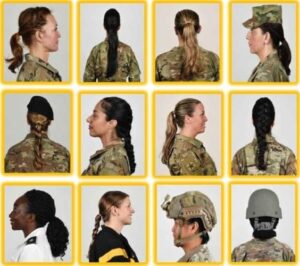 If female soldiers can wear long hair, why can’t the men?
If female soldiers can wear long hair, why can’t the men?
I was surprised to see a female Armor lieutenant wearing long pigtails, nearly to her waist, thinking, what if they get caught in the many moving parts of the cannon, the turret, and the engine compartment?
These changes, along with the seeming glorification of LGBTQ+ behavior, are having a detrimental effect on Army recruiting.
The clueless leadership is “baffled” by white males eschewing military service. They seem oblivious to the connection between the social justice crusade and its “wokeness” in turning off an essential recruiting demographic, rural southern white males.
As the great-grandson of a Confederate infantryman, I can understand why in the aftermath of purging all traces of that portion of U.S. history.
“This isn’t your father’s Army,” Lieutenant General Claudia Kennedy, the Army’s first female three-star, told Military Academy cadets in 1997.
She’s got that right. My father, his three brothers, and his future brother-in-law were part of the forces that decisively defeated the Axis powers of Germany and Japan in World War II.
What have we won since? The Gulf War, perhaps, but we were back in Iraq about 12 years later.
We should focus on winning and recovering from the next war, not some feel-good gender equality/equity goals.
Or our next choice is to learn Mandarin or Cantonese.
First published on American Thinker
Get Over It! We Are Not All Created Equal
By Capt Katie Petronio, USMC
First published in Marine Corp Gazette, July 2012
The Marine Corps Times recently published a handful of articles in regard to opening Infantry Officer Course (IOC) to females and the possibility of integrating women into the infantry community. In mid-April the Commandant directed the “integration” of the first wave of female officers into IOC this summer following completion of The Basic School (TBS). This action may or may not pave the way for female Marines to serve in the infantry as the results remain to be seen.
However, before the Marine Corps moves forward with this concept, should we not ask the hard questions and gain opinions of combat-experienced Marines (male and female alike) as to the purpose, the impact, and the gains from such a move?
As a combat-experienced Marine officer, and a female, I am here to tell you that we are not all created equal, and attempting to place females in the infantry will not improve the Marine Corps as the Nation’s force-in-readiness or improve our national security.
As a company grade 1302 combat engineer officer with 5 years of active service and two combat deployments, one to Iraq and the other to Afghanistan, I was able to participate in and lead numerous combat operations. In Iraq as the II MEF Director, Lioness Program, I served as a subject matter expert for II MEF, assisting regimental and battalion commanders on ways to integrate female Marines into combat operations. I primarily focused on expanding the mission of the Lioness Program from searching females to engaging local nationals and information gathering, broadening the ways females were being used in a wide variety of combat operations from census patrols to raids.
In Afghanistan I deployed as a 1302 and led a combat engineer platoon in direct support of Regimental Combat Team 8, specifically operating out of the Upper Sangin Valley. My platoon operated for months at a time, constructing patrol bases (PBs) in support of 3d Battalion, 5th Marines; 1st Battalion, 5th Marines; 2d Reconnaissance Battalion; and 3d Battalion, 4th Marines. This combat experience, in particular, compelled me to raise concern over the direction and overall reasoning behind opening the 03XX field.
Who is driving this agenda?
I am not personally hearing female Marines, enlisted or officer, pounding on the doors of Congress claiming that their inability to serve in the infantry violates their right to equality.
Shockingly, this isn’t even a congressional agenda.
This issue is being pushed by several groups, one of which is a small committee of civilians appointed by the Secretary of Defense called the Defense Advisory Committee on Women in the Service (DACOWITS). Their mission is to advise the Department of Defense (DoD) on recommendations, as well as matters of policy, pertaining to the well-being of women in the Armed Services from recruiting to employment. Members are selected based on their prior military experience or experience with women’s workforce issues.
I certainly applaud and appreciate DACOWITS’ mission; however, as it pertains to the issue of women in the infantry, it’s very surprising to see that none of the committee members are on active duty or have any recent combat or relevant operational experience relating to the issue they are attempting to change.
I say this because, at the end of the day, it’s the active duty servicemember who will ultimately deal with the results of their initiatives, not those on the outside looking in.
As of now, the Marine Corps hasn’t been directed to integrate, but perhaps the Corps is anticipating the inevitable—DoD pressuring the Corps to comply with DACOWITS’ agenda as the Army has already “rogered up” to full integration.
Regardless of what the Army decides to do, it’s critical to emphasize that we are not the Army; our operational speed and tempo, along with our overall mission as the Nation’s amphibious force-in-readiness, are fundamentally different than that of our sister Service.
By no means is this distinction intended as disrespectful to our incredible Army. My main point is simply to state that the Marine Corps and the Army are different; even if the Army ultimately does fully integrate all military occupational fields, that doesn’t mean the Corps should follow suit.
I understand that there are female servicemembers who have proven themselves to be physically, mentally, and morally capable of leading and executing combat-type operations; as a result, some of these Marines may feel qualified for the chance of taking on the role of 0302.
In the end, my main concern is not whether women are capable of conducting combat operations, as we have already proven that we can hold our own in some very difficult combat situations; instead, my main concern is a question of longevity.
Can women endure the physical and physiological rigors of sustained combat operations, and are we willing to accept the attrition and medical issues that go along with integration?
As a young lieutenant, I fit the mold of a female who would have had a shot at completing IOC, and I am sure there was a time in my life where I would have volunteered to be an infantryman.
I was a star ice hockey player at Bowdoin College, a small elite college in Maine, with a major in government and law. At 5 feet 3 inches I was squatting 200 pounds and benching 145 pounds when I graduated in 2007.
I completed Officer Candidates School (OCS) ranked 4 of 52 candidates, graduated 48 of 261 from TBS, and finished second at MOS school.
I also repeatedly scored far above average in all female-based physical fitness tests (for example, earning a 292 out of 300 on the Marine physical fitness test).
Five years later, I am physically not the woman I once was and my views have greatly changed on the possibility of women having successful long careers while serving in the infantry.
I can say from firsthand experience in Iraq and Afghanistan, and not just emotion, that we haven’t even begun to analyze and comprehend the gender-specific medical issues and overall physical toll continuous combat operations will have on females.
I was a motivated, resilient second lieutenant when I deployed to Iraq for 10 months, traveling across the Marine area of operations (AO) and participating in numerous combat operations.
Yet, due to the excessive amount of time I spent in full combat load, I was diagnosed with a severe case of restless leg syndrome. My spine had compressed on nerves in my lower back causing neuropathy which compounded the symptoms of restless leg syndrome.
While this injury has certainly not been enjoyable, Iraq was a pleasant experience compared to the experiences I endured during my deployment to Afghanistan.
At the beginning of my tour in Helmand Province, I was physically capable of conducting combat operations for weeks at a time, remaining in my gear for days if necessary and averaging 16-hour days of engineering operations in the heart of Sangin, one of the most kinetic and challenging AOs in the country.
There were numerous occasions where I was sent to a grid coordinate and told to build a PB from the ground up, serving not only as the mission commander but also the base commander until the occupants (infantry units) arrived 5 days later.
In most of these situations, I had a sergeant as my assistant commander, and the remainder of my platoon consisted of young, motivated NCOs.
I was the senior Marine making the final decisions on construction concerns, along with 24-hour base defense and leading 30 Marines at any given time.
The physical strain of enduring combat operations and the stress of being responsible for the lives and well-being of such a young group in an extremely kinetic environment were compounded by lack of sleep, which ultimately took a physical toll on my body that I couldn’t have foreseen.
By the fifth month into the deployment, I had muscle atrophy in my thighs that was causing me to constantly trip and my legs to buckle with the slightest grade change.
My agility during firefights and mobility on and off vehicles and perimeter walls was seriously hindering my response time and overall capability.
It was evident that stress and muscular deterioration was affecting everyone regardless of gender; however, the rate of my deterioration was noticeably faster than that of male Marines and further compounded by gender-specific medical conditions.
At the end of the 7-month deployment, and the construction of 18 PBs later, I had lost 17 pounds and was diagnosed with polycystic ovarian syndrome (which personally resulted in infertility, but is not a genetic trend in my family), which was brought on by the chemical and physical changes endured during deployment.
Regardless of my deteriorating physical stature, I was extremely successful during both of my combat tours, serving beside my infantry brethren and gaining the respect of every unit I supported.
Regardless, I can say with 100 percent assurance that despite my accomplishments, there is no way I could endure the physical demands of the infantrymen whom I worked beside as their combat load and constant deployment cycle would leave me facing medical separation long before the option of retirement.
I understand that everyone is affected differently; however, I am confident that should the Marine Corps attempt to fully integrate women into the infantry, we as an institution are going to experience a colossal increase in crippling and career-ending medical conditions for females.
There is a drastic shortage of historical data on female attrition or medical ailments of women who have executed sustained combat operations.
This said, we need only to review the statistics from our entry-level schools to realize that there is a significant difference in the physical longevity between male and female Marines.
At OCS the attrition rate for female candidates in 2011 was historically low at 40 percent, while the male candidates attrite at a much lower rate of 16 percent.
Of candidates who were dropped from training because they were injured or not physically qualified, females were breaking at a much higher rate than males, 14 percent versus 4 percent.
he same trends were seen at TBS in 2011; the attrition rate for females was 13 percent versus 5 percent for males, and 5 percent of females were found not physically qualified compared with 1 percent of males.
Further, both of these training venues have physical fitness standards that are easier for females; at IOC there is one standard regardless of gender. The attrition rate for males attending IOC in 2011 was 17 percent. Should female Marines ultimately attend IOC, we can expect significantly higher attrition rates and long-term injuries for women.
There have been many working groups and formal discussions recently addressing what changes would be necessary to the current IOC period of instruction in order to accommodate both genders without producing an underdeveloped or incapable infantry officer.
Not once was the word “lower” used, but let’s be honest, “modifying” a standard so that less physically or mentally capable individuals (male or female) can complete a task is called “lowering the standard”!
The bottom line is that the enemy doesn’t discriminate, rounds will not slow down, and combat loads don’t get any lighter, regardless of gender or capability.
Even more so, the burden of command does not diminish for a male or female; a leader must gain the respect and trust of his/her Marines in combat.
Not being able to physically execute to the standards already established at IOC, which have been battle tested and proven, will produce a slower operational speed and tempo resulting in increased time of exposure to enemy forces and a higher risk of combat injury or death.
For this reason alone, I would ask everyone to step back and ask themselves, does this integration solely benefit the individual or the Marine Corps as a whole, as every leader’s focus should be on the needs of the institution and the Nation, not the individual?
Which leads one to really wonder, what is the benefit of this potential change?
The Marine Corps is not in a shortage of willing and capable young male second lieutenants who would gladly take on the role of infantry officers. In fact we have men fighting to be assigned to the coveted position of 0302.
In 2011, 30 percent of graduating TBS lieutenants listed infantry in their top three requested MOSs. Of those 30 percent, only 47 percent were given the MOS.
On the other hand, perhaps this integration is an effort to remove the glass ceiling that some observers feel exists for women when it comes to promotions to general officer ranks.
Opening combat arms MOSs, particularly the infantry, such observers argue, allows women to gain the necessary exposure of leading Marines in combat, which will then arguably increase the chances for female Marines serving in strategic leadership assignments.
As stated above, I have full faith that female Marines can successfully serve in just about every MOS aside from the infantry.
Even if a female can meet the short-term physical, mental, and moral leadership requirements of an infantry officer, by the time that she is eligible to serve in a strategic leadership position, at the 20-year mark or beyond, there is a miniscule probability that she’ll be physically capable of serving at all.
Again, it becomes a question of longevity.
Despite my personal opinion regarding the incorporation of females into the infantry community, I am not blind to the fact that females play a key role in countering the gender and cultural barriers we are facing at war, and we do have a place in combat operations.
As such, a potential change that I do recommend considering strongly for female Marine officers is to designate a new secondary MOS (0305) for a Marine serving as female engagement team (FET) officer in charge (OIC). 0305s would be employed in the same way we employ drill instructors, as we do not need an enduring FET entity but an existing capability able to stand up based on operational requirements.
Legitimizing a program that is already operational in the Corps would greatly benefit both the units utilizing FETs and the women who serve as FET OICs.
Unfortunately, FET OICs today are not properly screened and trained for this mission.
I propose that those being considered for FET OIC be prescreened and trained through a modified IOC with an appropriately adjusted physical expectation. FET OICs need to better understand the infantry culture and mindset and work with their 0302 brethren to incorporate FET assistance during specific phases of operations to properly prepare them to serve as the subject matter experts to a regimental- or battalion-level infantry commander.
Through joint OIC training, both 0302s and FET OICs can start to learn how to integrate capabilities and accomplish their mission individually and collectively. This, in my mind, is a much more viable, cost-effective solution, with high reward for the Marine Corps and the Nation, and it will also directly improve the capabilities of FET OICs.
Finally, what are the Marine Corps standards, particularly physical fitness standards, based on—performance and capability or equality?
We abide by numerous discriminators, such as height and weight standards. As multiple Marine Corps Gazette articles have highlighted, Marines who can run first-class physical fitness tests and who have superior MOS proficiency are separated from the Service if they do not meet the Marine Corps’ height and weight standards.
Further, tall Marines are restricted from flying specific platforms, and color blind Marines are faced with similar restrictions.
We recognize differences in mental capabilities of Marines when we administer the Armed Services Vocational Aptitude Battery and use the results to eliminate/open specific fields. These standards are designed to ensure safety, quality, and the opportunity to be placed in a field in which one can sustain and succeed.
Which once again leads me, as a ground combat-experienced female Marine Corps officer, to ask, what are we trying to accomplish by attempting to fully integrate women into the infantry?
For those who dictate policy, changing the current restrictions associated with women in the infantry may not seem significant to the way the Marine Corps operates.
I vehemently disagree; this potential change will rock the foundation of our Corps for the worse and will weaken what has been since 1775 the world’s most lethal fighting force.
In the end, for DACOWITS and any other individual or organization looking to increase opportunities for female Marines, I applaud your efforts and say thank you.
However, for the long-term health of our female Marines, the Marine Corps, and U.S. national security, steer clear of the Marine infantry community when calling for more opportunities for females.
Let’s embrace our differences to further hone in on the Corps’ success instead of dismantling who we are to achieve a political agenda.
Regardless of the outcome, we will be “Semper Fidelis” and remain focused on our mission to protect and defend the United States of America.

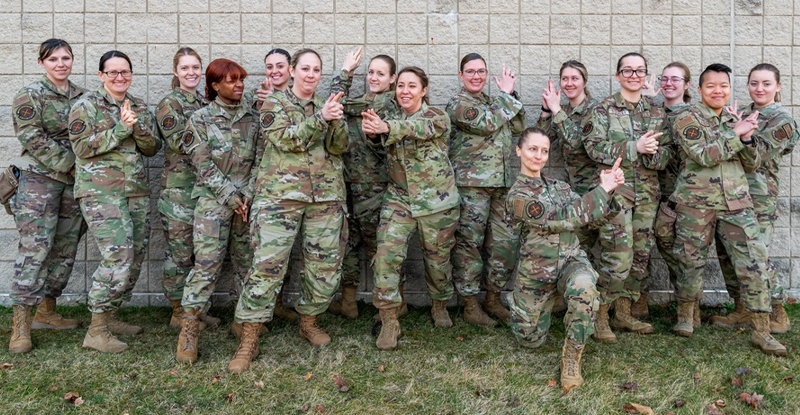

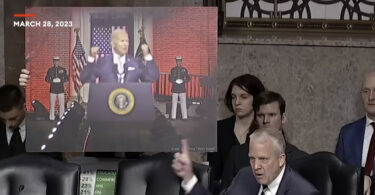
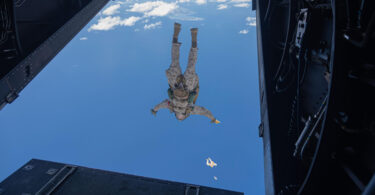

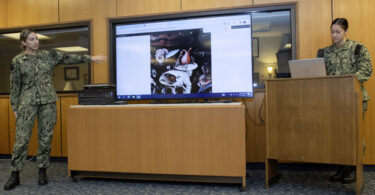

Excellent Article. I served in the Army from 83 to 85 and from 87 to 89. My MOS was 13Bravo20/Gunner. I was a Sergeant E5, and I wound up getting medically (Honorably) discharged as a result of the heavy physical demands of my job in combat arms. I was in the best shape of my life, and serving in Artillery burned me out. As much as I commend women for serving in the Army and the other branches of the Armed Forces, there is absolutely no way that a Female Soldier can do the job I did in the Artillery. An MOS that often required me to perform heavy physical labor. In my day, female soldiers were not allowed to serve in combat, period. The Army has changed and the Army I served in no longer exists.
Amen to that Rick. I served in the Air Force from 74 to 79 and I feel the same way as you do about women in the military. Even though I was an Inventory Mgt. Spec. (Supply) and had a seemingly easy job, in the different sections of Base Supply that I was in, they all had their unique challenges which included dealing the WAFs.
The people who thought that it would be a good thing for women to be in the military were obviously Democrats/Socialists.